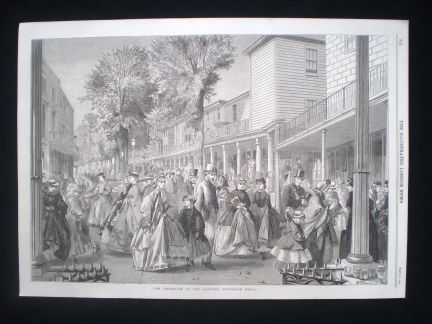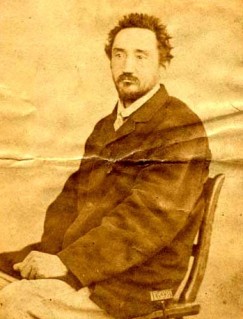In the summer of 1864 a new figure appears on the Tunbridge Wells scene and attracts a great deal of attention. He is around 30 years old, tall, slim and well dressed, with a dark complexion, dark hair and grey eyes.

The Pantiles in 1864 (Illustrated London News)
The exotic newcomer would walk along the Parade (Pantiles), absorbed by melancholy thoughts. Frequently he would pay the band to play the Polish national anthem. When approached he introduced himself as Count Sobieski, son of the King of Poland. He claimed to have been exiled on account of his criticisms of the Russian government. He also said that he had fought a duel at Heidelberg, escaped to Paris and then travelled by ship to Bristol. His agent was sending him regular sums from his estates in Poland, but he could not return home. Many felt pity for him in such a sad situation, which obviously weighed on him heavily.

Sobieski/Ostreg in the 1870s
The count was very engaging and was quickly welcomed into fashionable society. It was rumoured he ‘enchanted more than one young lady’s heart’. The ladies showered him with presents and local tradesmen and hotel keepers were happy to extend him credit.
However, after a few months the count suddenly disappeared from town. Soon news reached Tunbridge Wells that he was not what he had seemed. He was Russian not Polish, his real name was Michael Ostreg and he was certainly not a count. In December 1864 he appeared in court in Exeter accused of larceny and was sentenced to eight months hard labour.
Ostreg seems to have been a habitual, but very inept criminal. Over the following years the newspapers reported that he was arrested and charged with theft or fraud in various places across the country, including Maidstone, Chatham, Woolwich, Burton-on-Trent and Eton. He served several prison sentences and was committed to a lunatic asylum on two occasions.
Perhaps the counterfeit count did not stay in Tunbridge Wells long enough for his crimes here to be uncovered. However, his deceptions may have been a warning to some residents about the danger of judging people on the basis of appearances alone.
Note
- Ostreg used a range of other aliases, as well as Sobieski, including Max Gosslar, Monsieur Orlof, Bertrand Ashley and Ashley Nabokov.
- In 1894 Ostreg was listed as a suspect in the Jack the Ripper case. Recent research has shown that it is highly unlikely he was the Ripper; there is no evidence that he committed any crime other than fraud or theft, he did not match the physical descriptions given of the Ripper and there is evidence that he was in prison in France when the murders were committed.

Love this!